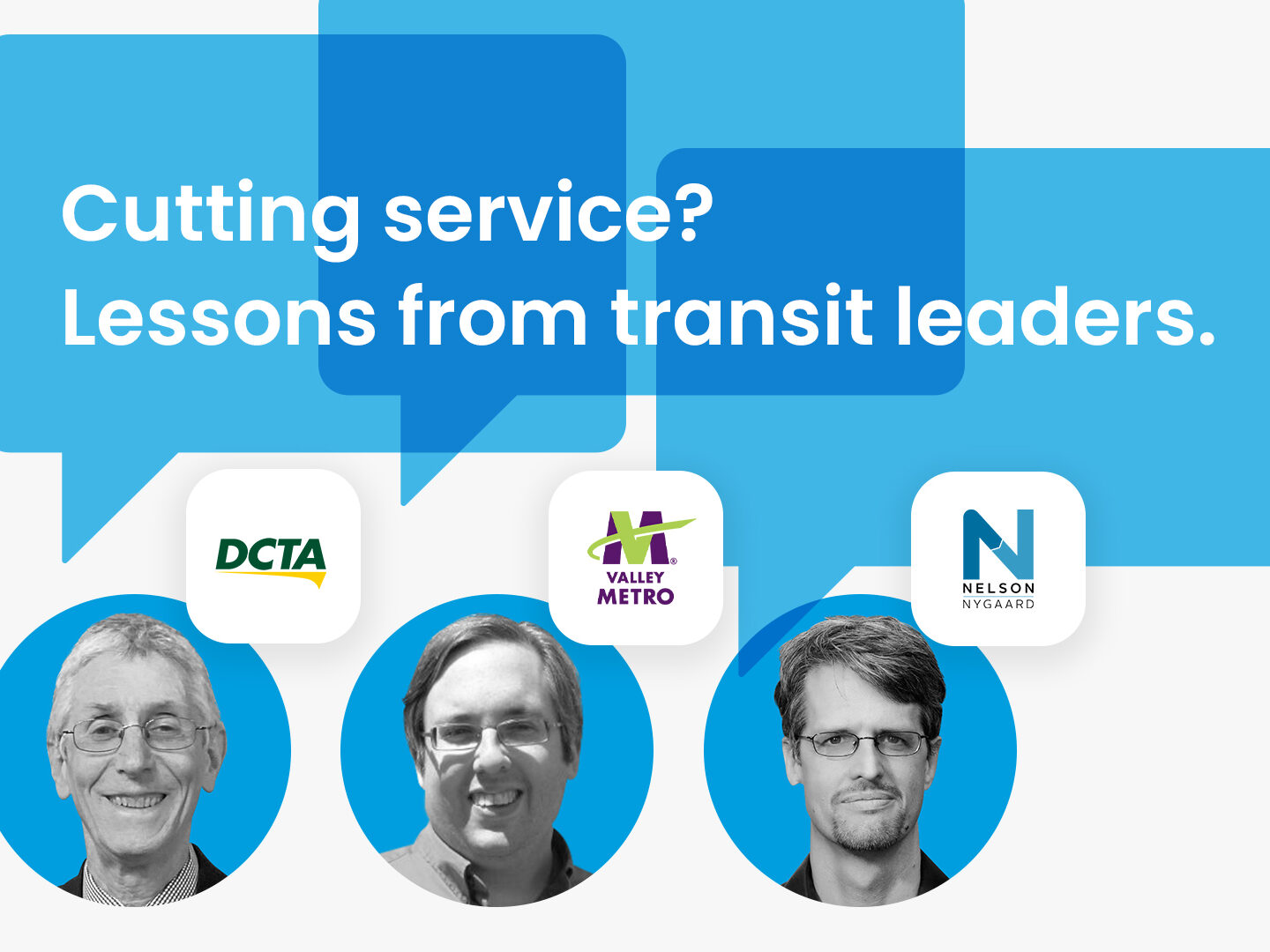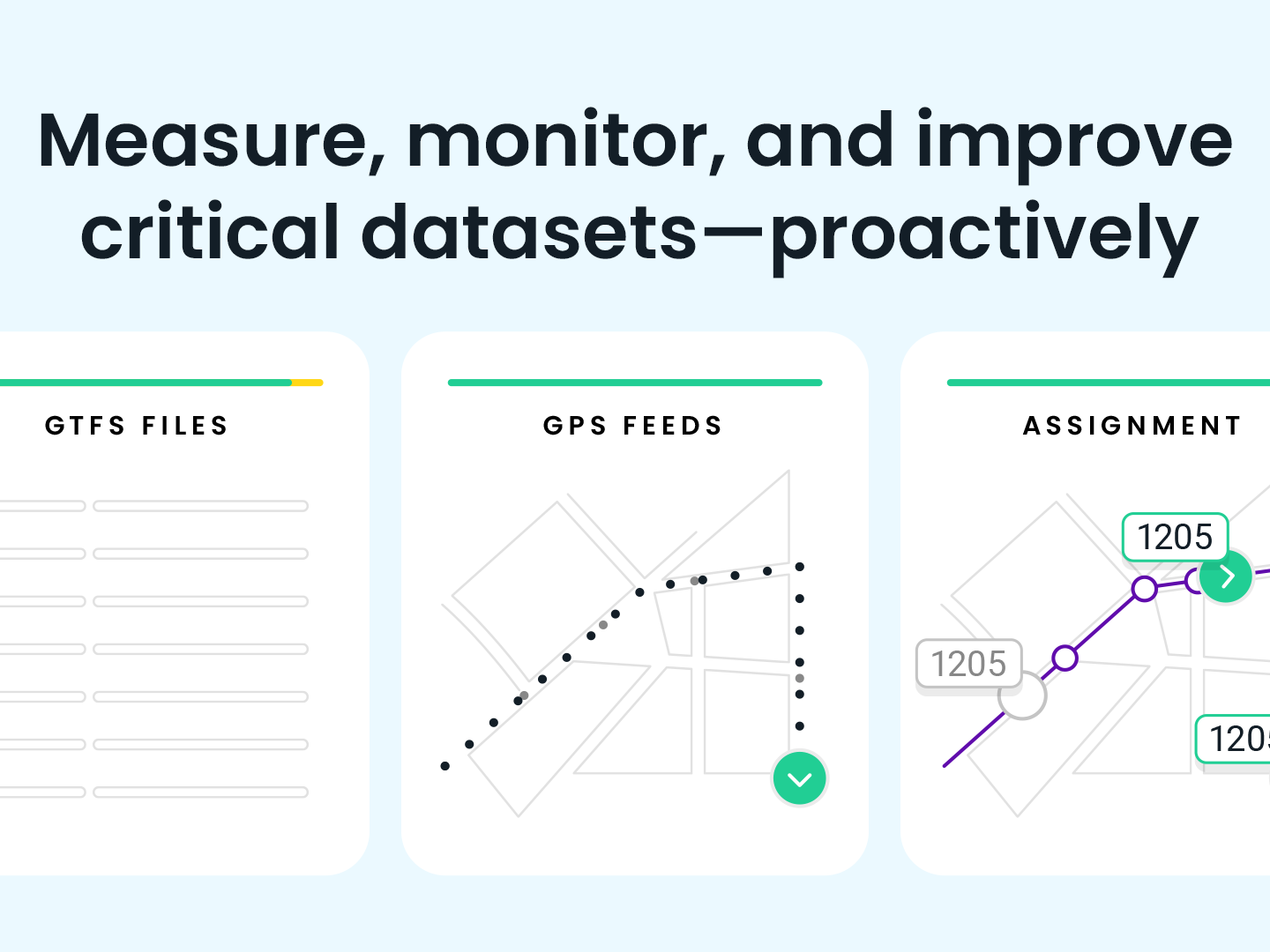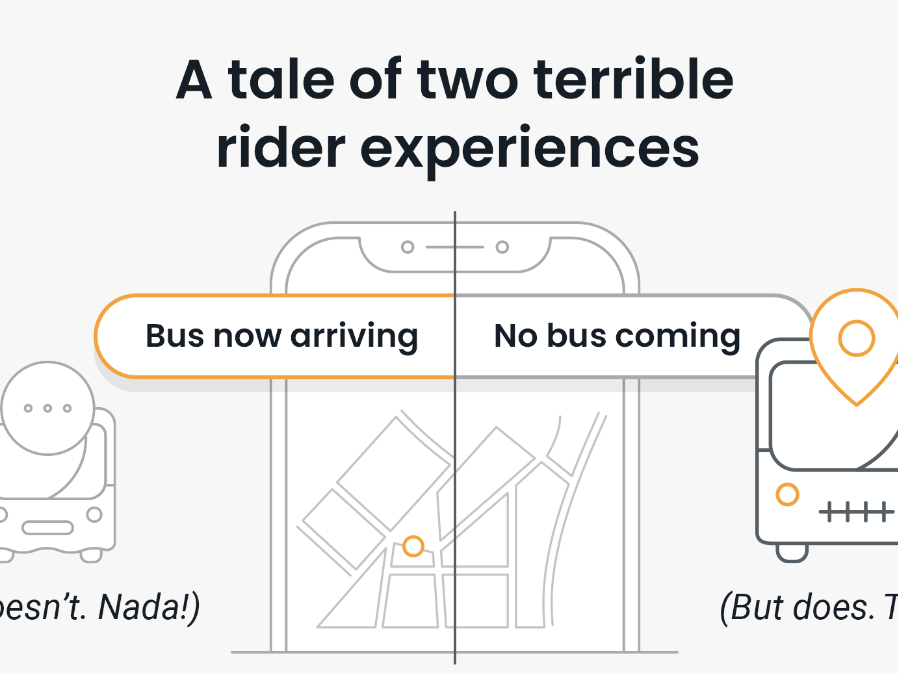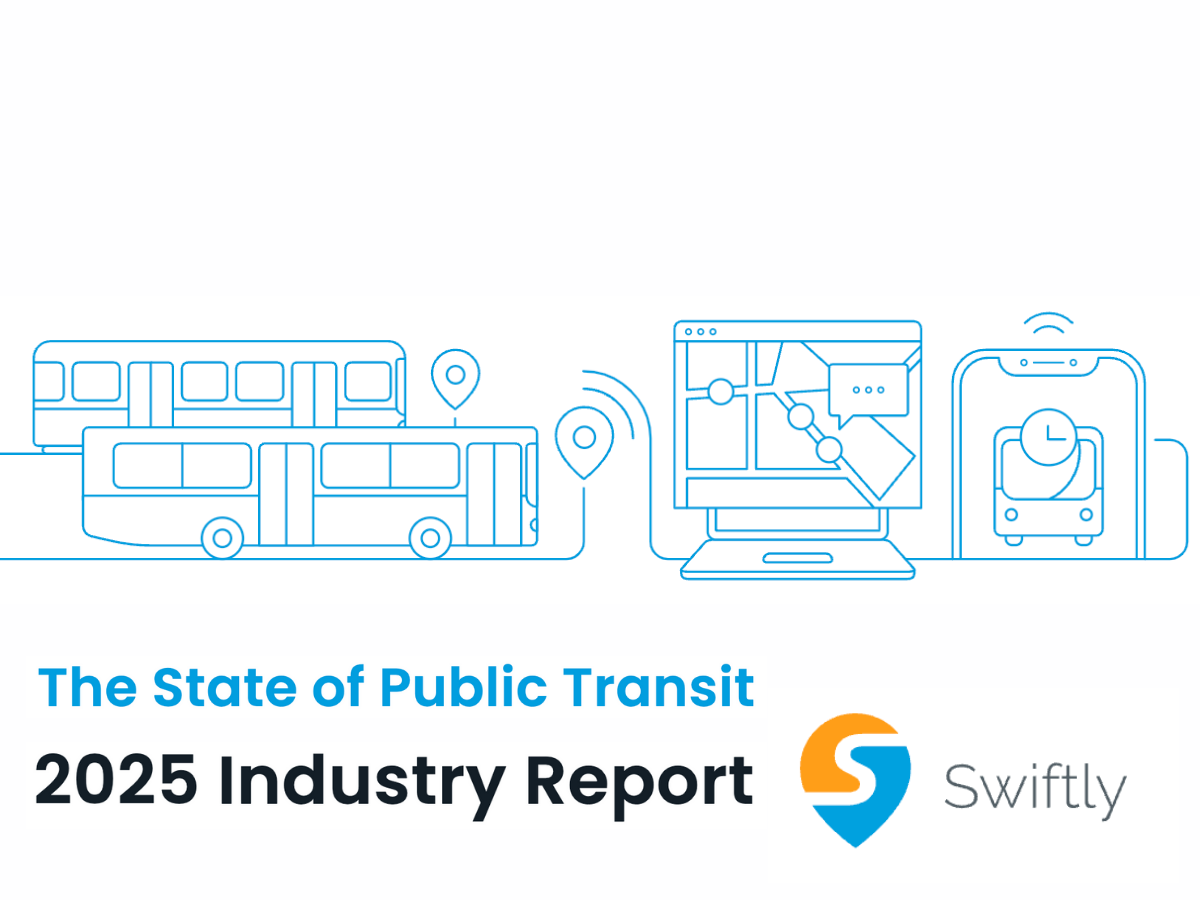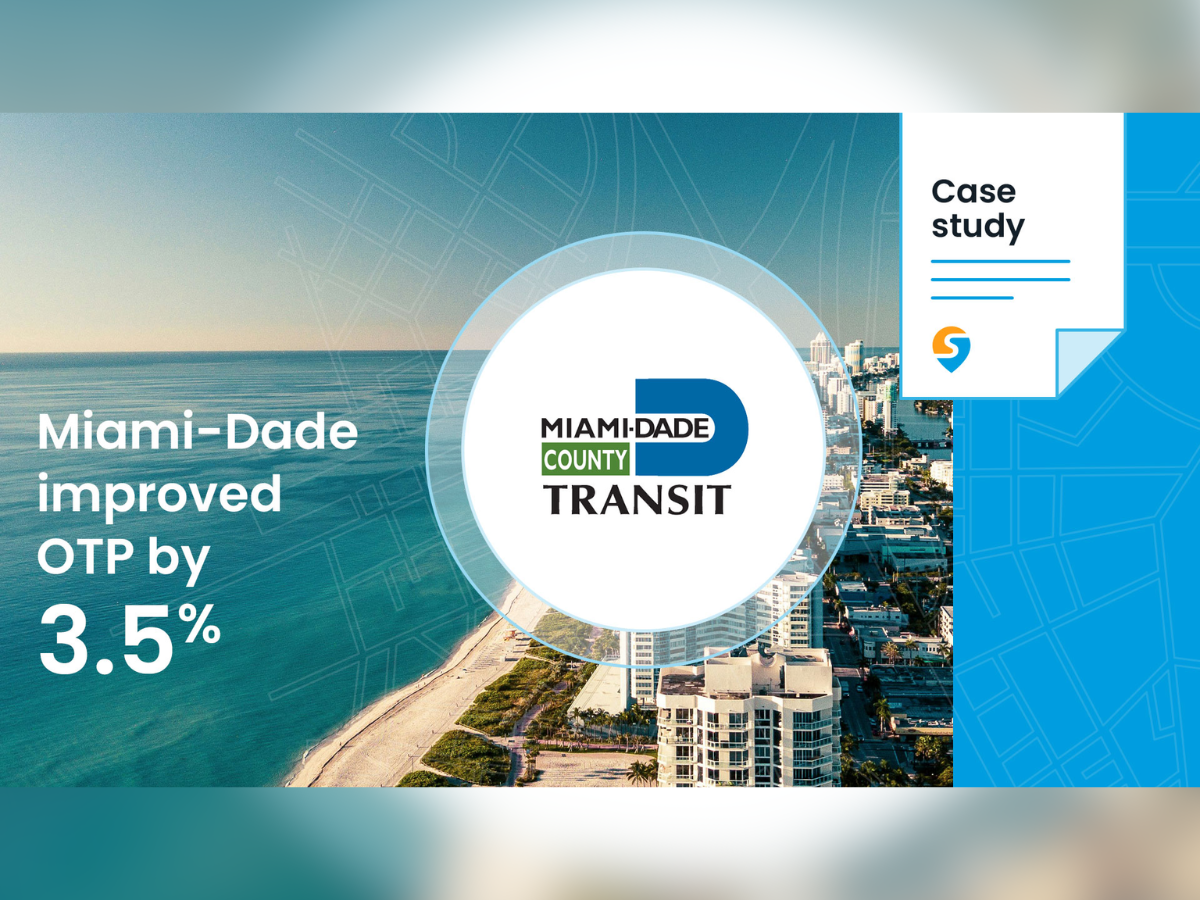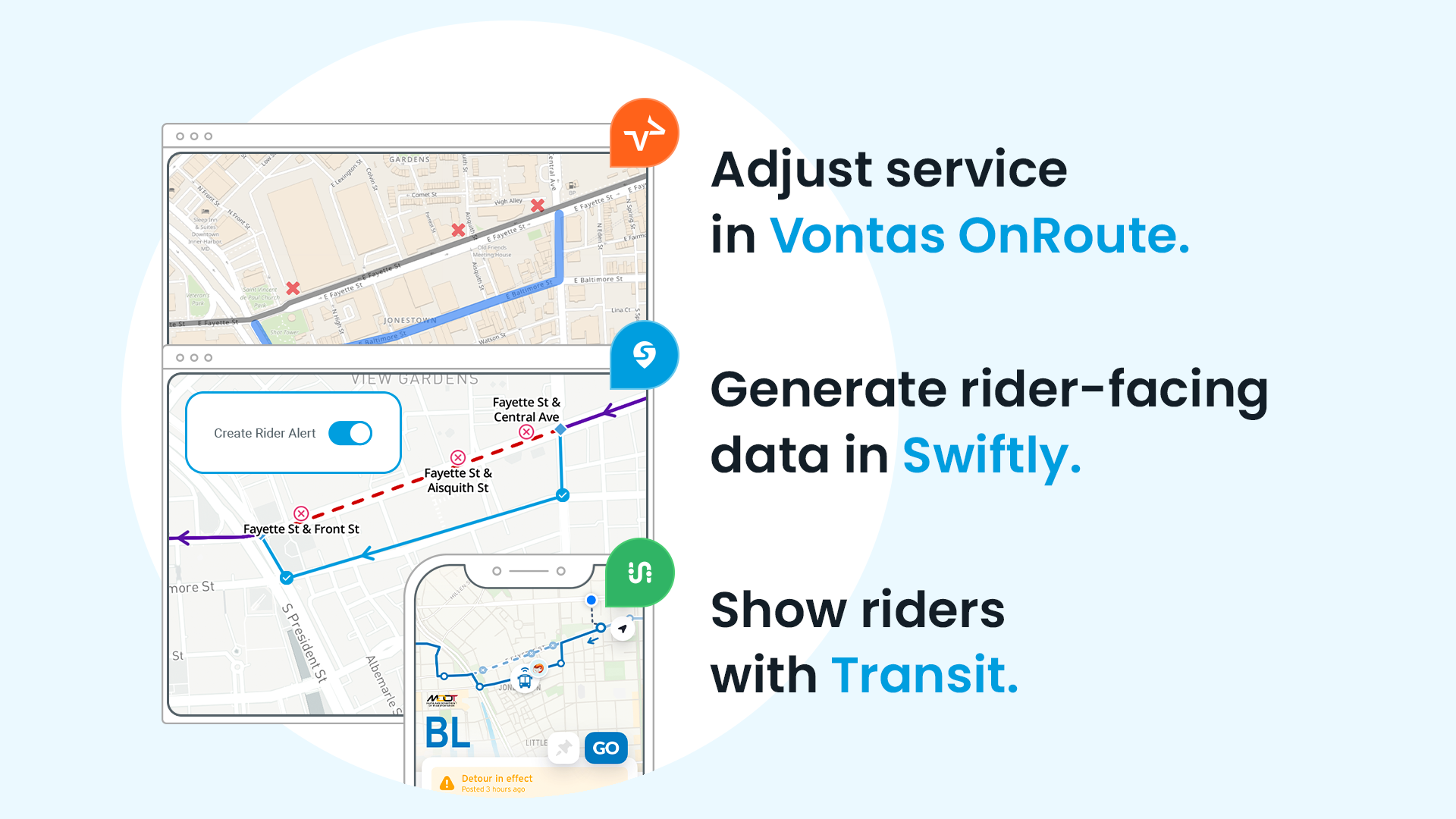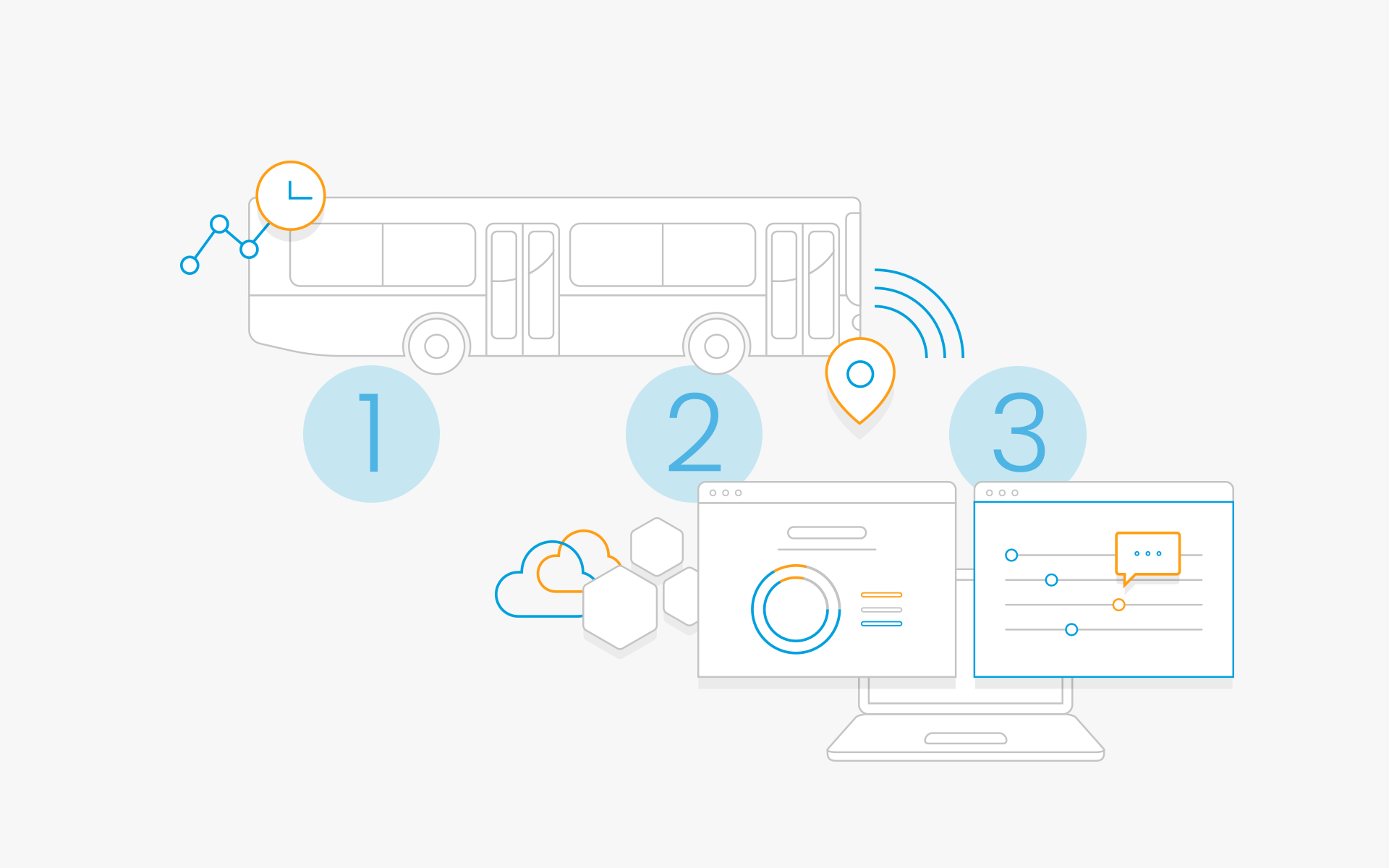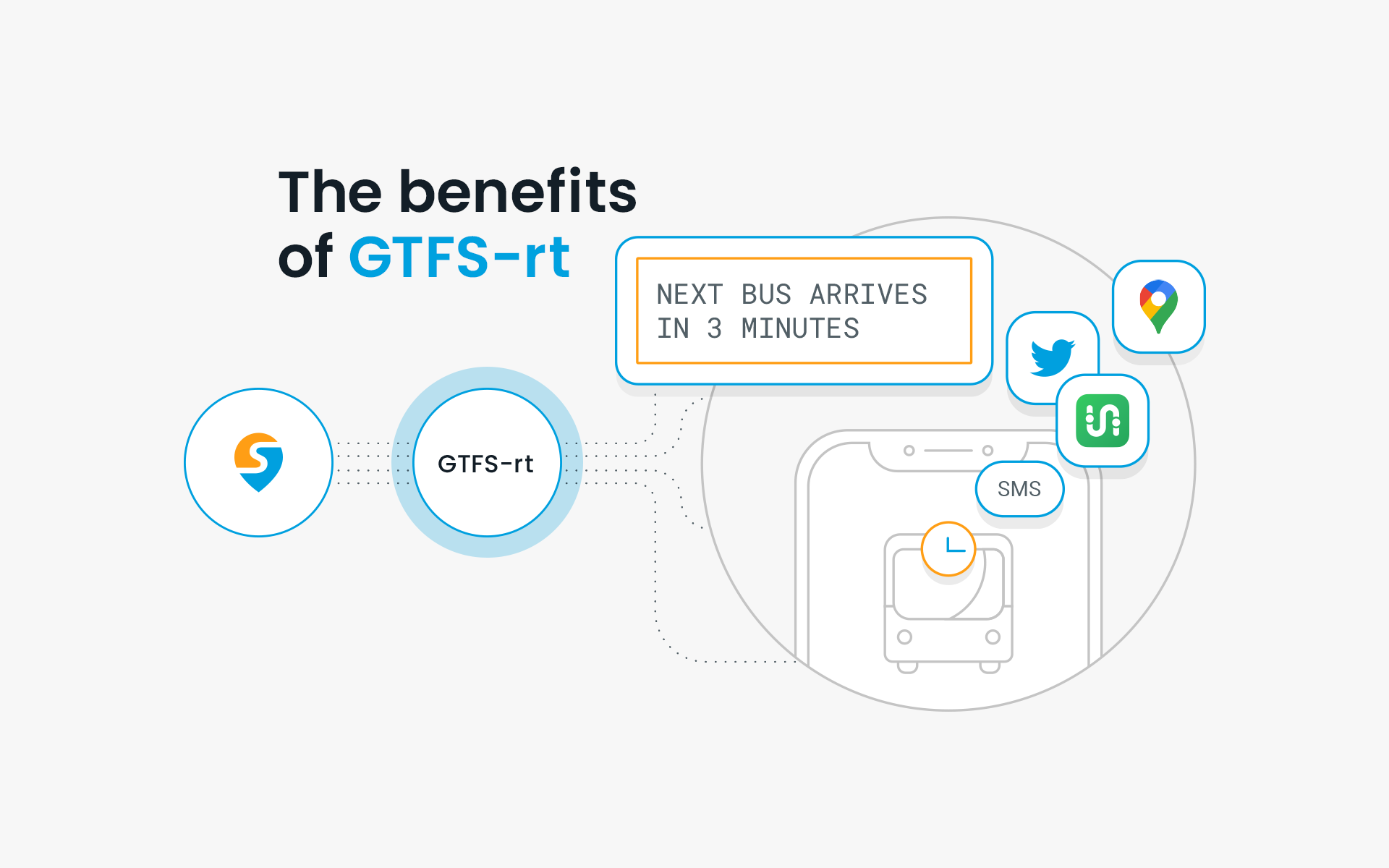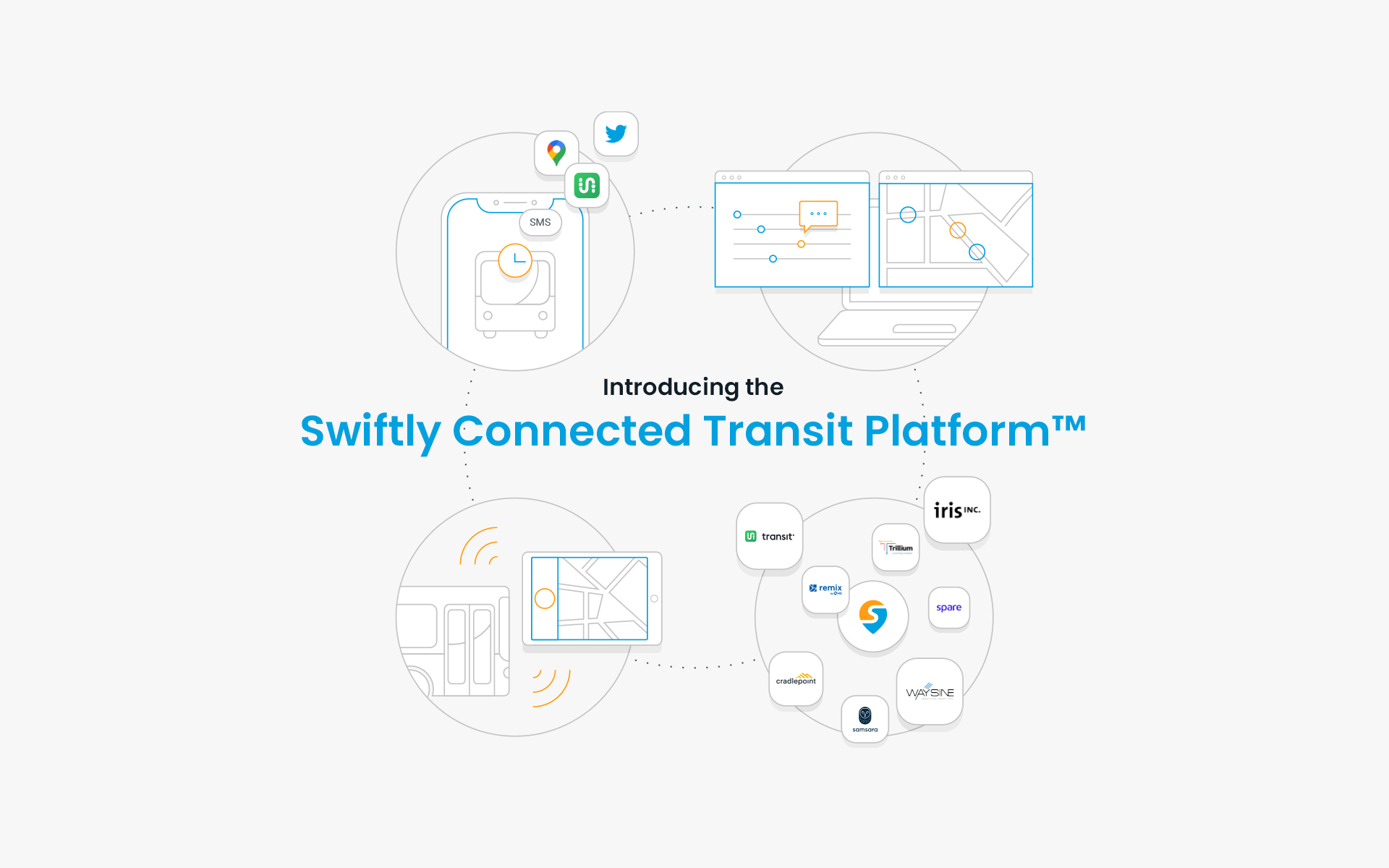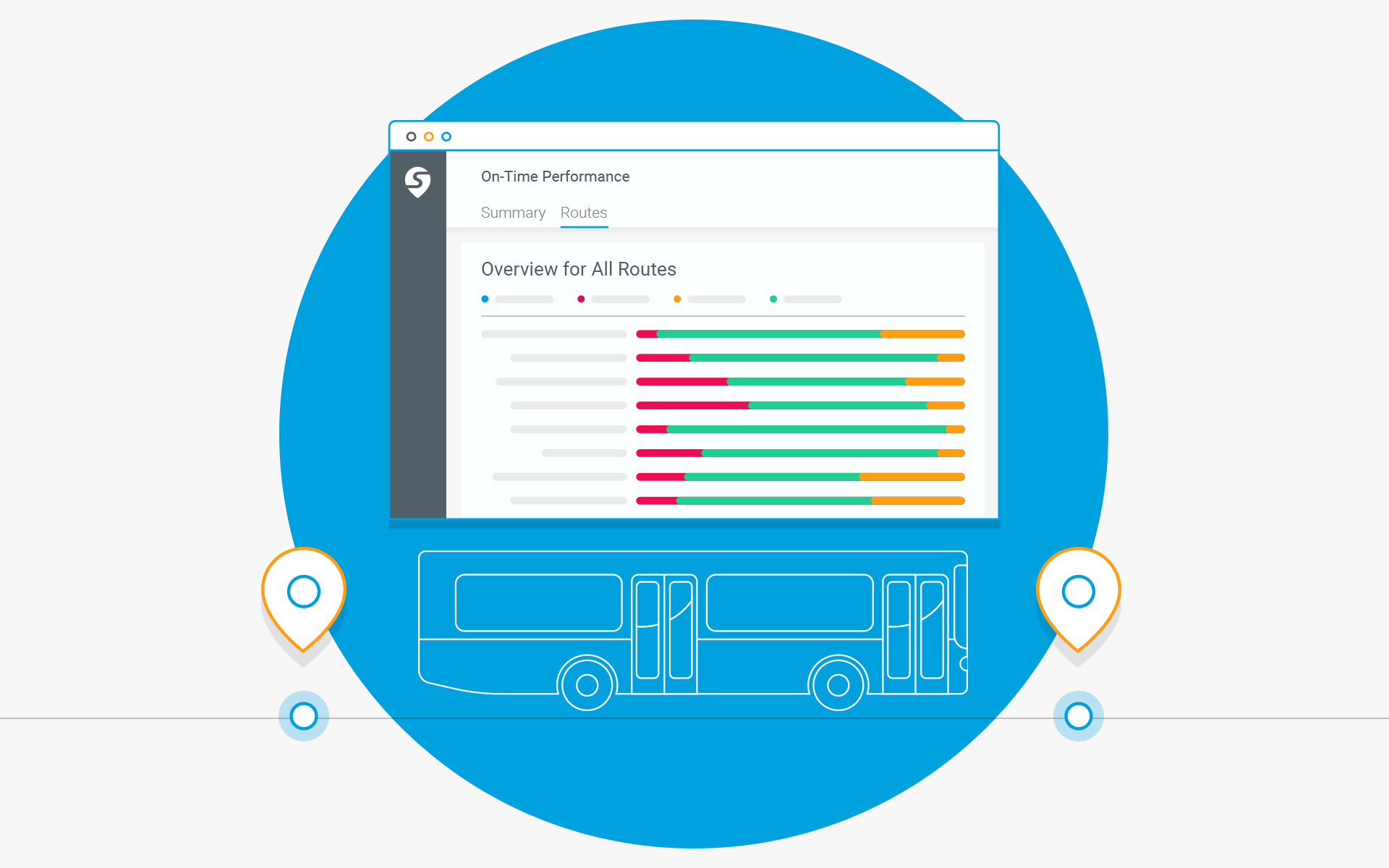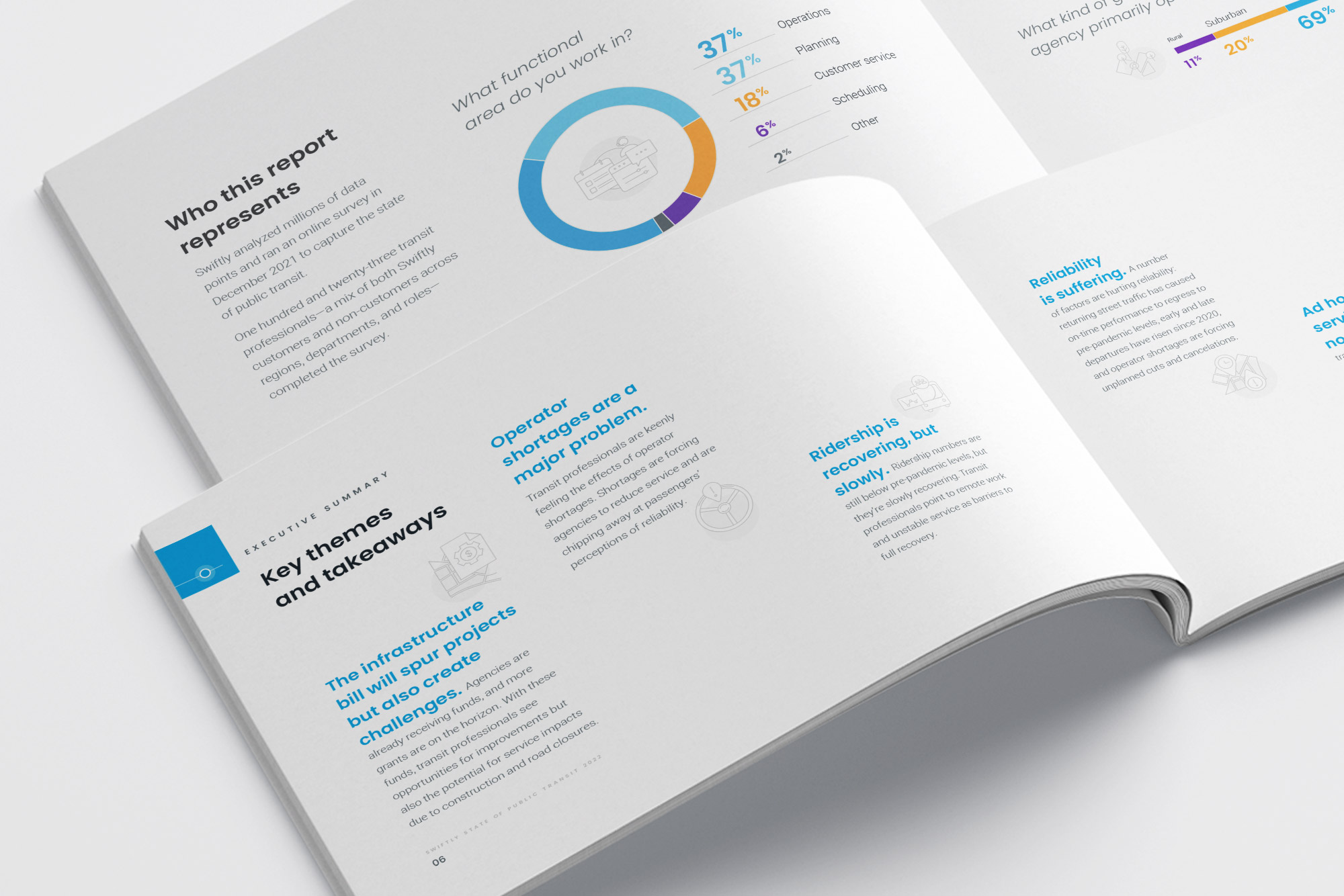CapMetro Looks to the Future with the Swiftly Connected Transit Platform
Austin’s CapMetro has been a leader in transit technology for years, first as an early adopter of real-time passenger information and recently with a project to expand Swiftly’s Onboard App to their full fleet of 500 buses.
Austin has experienced unique challenges over the past few years, and the city has big plans for the future. Winter storms disrupted service in the winter of 2021, and the agency continues to contend with the effects of the nationwide operator shortage. At the same time, the agency’s plan for the future, Project Connect, will see the city’s fleet doubled and a tunnel constructed through downtown Austin.
Through it all, technology allows CapMetro to remain agile, efficient, and data-driven.
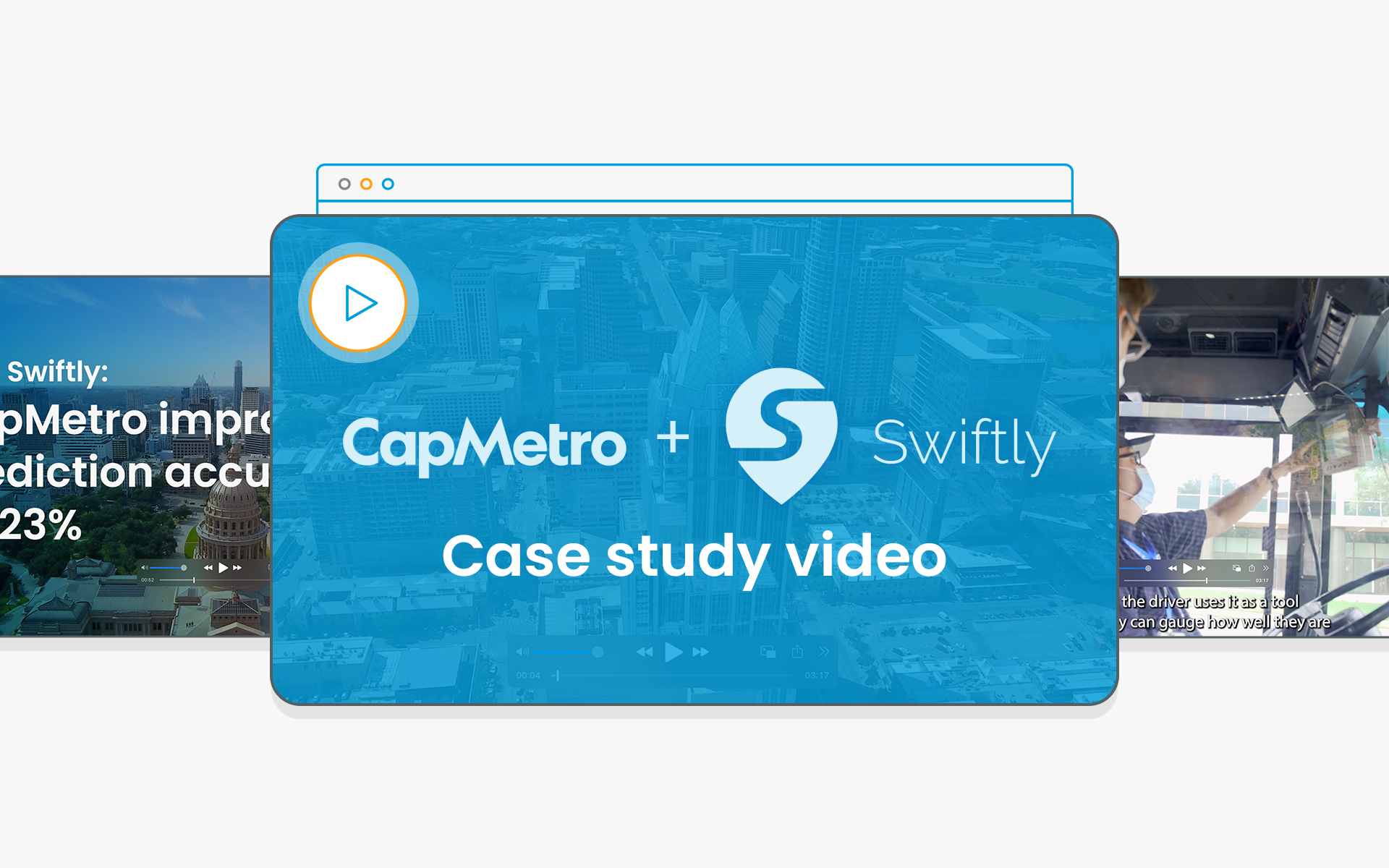
CapMetro’s Results with the Connected Transit Platform
Real-Time Passenger Information from Swiftly has enabled CapMetro to make more accurate arrival predictions available to riders through CapMetro-owned and third-party channels. The results include:
- Improved prediction accuracy by 23 percent
- A 29 percent reduction in early predictions
- 2.7 million improved trips
- 866,700 missed trips avoided due to more accurate predictions
CapMetro has also implemented Service Adjustments alongside Real-Time Passenger Information as part of Swiftly’s Connect with Passengers solution. The product saw heavy use as service shifted during the infamous winter storm, and today as construction and operator shortages give cause for ad hoc service changes. In the most recent three month period, CapMetro created 4,290 service adjustments, averaging 48 service adjustments per day!
The agency has also transformed the operator experience with Swiftly’s Onboard App. Onboard App is an onboard application that displays all the information that operators need to deliver reliable service to riders: real-time schedule and headway adherence, a map view with current location, and relevant service adjustments.
CapMetro started their use of the product with a pilot and will now be rolling out the mobile app on tablets to all 500 of their vehicles. From the pilot on BRT routes, CapMetro already witnessed a 39 percent reduction in bunched departures from timepoints and a 45 percent reduction in gapped departures from timepoints.
Insights on the Future of Transit Technology
Transit Systems Architect Daryl Weinberg has played a major role in charting Capital Metro’s approach to transit technology as the agency’s Transit Systems Architect. He has helped lead the charge in implementing Swiftly’s Connected Transit Platform and executing the agency’s strategy for reliable, accessible transit data.
We spoke with Daryl in detail about the impact he’s seen from Swiftly, how he evaluates technology solutions, and his vision for the connected transit agency of the future.
- Can you introduce yourself and your role?
I’ve been at Capital Metro for 20 years. I’m a Transit Systems Architect. I make sure that all of our technology tools that powers our transit systems can communicate with each other and that data standards are set. I evaluate projects as they come in and work on new technologies.
- What are CapMetro’s long term strategic goals?
We just launched Project Connect, which is our longtime vision to mobilize all of Austin. We’re going to be doubling the size of our fleet, adding four more rail lines, and building a tunnel in downtown Austin for a transit center.
We want to move people more efficiently than we do today. Austin has experienced booming growth for decades. We’re the eleventh largest city in the country and our transit system needs to step up to get those people around. All those cars on the road are causing quite a bottleneck.
We want to be dynamic. We want to be innovative. We want to give customers the experience they need and the ability to get where they need to go. We don’t want to just attract the customers that have to ride because they’re relying on transit to get places. We want to have choice riders choosing to use our service – to help everybody be greener and to make the planet better.
- How does Swiftly fit into that vision?
We’ve been partnering with Swiftly now for a little over five years. We had a real issue with our real-time predictions when we first met Swiftly. Our riders were getting frustrated that the sign said the bus would be there in 5 minutes, 5 minutes, 4 minutes, 6 minutes, 4 minutes. It was a frustrating experience for the rider.
Swiftly has helped us greatly improve the accuracy of our predictions, analyze the routes we run, and optimize time and performance. They’ve helped us implement routes that are frequency based, because now we’re trying to not necessarily adhere to a schedule but to put a bus in front of you every 10 or 12 minutes. The spacing between the buses is more important than the schedule. Swiftly has been a major tool in helping to make that happen.
- How does Swiftly help Cap Metro improve the rider experience around ad hoc changes to service?
Since Service Adjustments is fairly new and we implemented it during COVID, people are still providing feedback on it. It lets someone know, “Hey, the stop I usually get off at is closed today,” before they even get on the bus.
We’re sending out a notification. It’s showing up in our mobile app to let them know there’s been a change on the route they ride. For example, we might let them know that we’re detouring service around the University of Texas because there’s a football game this weekend. Now we can put that information in all of our apps and in the third-party apps that consume our data feeds, to help them get around more efficiently and to know if they need to take another option. Maybe we want everyone to ride transit; maybe they need to take a Metro bike. Maybe in this one case they need to call for a ride service to pick them up instead. So they can make informed transit decisions to help them go about their day.
- How is Cap Metro implementing Onboard App to empower conductors?
This is a fairly new system here at CapMetro. We’re getting ready to deploy it to all our operators. It really helps them with frequency. They know how far away the next bus is – ahead of them, behind them. They can look at a map to see where they are on their route. It gives them confidence because the countdown is telling them when they should leave that timepoint or stop. And it helps them do it at the appropriate time, and not beforehand. No rider likes the feeling of running up to the bus stop and watching the bus pull away. This is helping to solve that problem.
- In light of nationwide operator shortages, how does Onboard App help new operators get up to speed more quickly and overcome the challenges of taking on new routes?
It helps them with a map of their route. It helps with the information on changes to the route, particularly as they’re moving from route to route. It’s showing them their on-time performance, so it lets them know if they need to speed up or slow down going through sections. It provides them more confidence in what they’re doing. As we roll out more features with Onboard App and we’re able to provide directions, that’s going to be huge for our operators – especially the new ones and the ones that are changing routes frequently. The app will actually tell them where to go.
- How has Swiftly’s Connected Transit Platform improved workflows for staff at Capital Metro – for example, operations, customer service, scheduling, planning, and more?
When we first started working with Swiftly, we thought it would only be used in dispatch and operations. Now there are over 300 users of the product. It’s being used in planning. It’s interfacing with Remix. It’s being used by our schedulers when they’re trying to plan how long a new trip should take. It’s being used by IT to analyze what’s happening with equipment on the vehicles and on the routes to make sure our message signs are displaying the correct data, which is powered by Swiftly. It’s helping us troubleshoot those issues.
Customer service uses it all-day every day. When somebody calls and says “Hey, I missed my bus. What happened?” Or, “Hey I’m standing here. Where is my bus?” They can quickly and accurately get that information to the customer.
It’s used throughout the agency, by pretty much every department to some degree or another. Even marketing uses it on occasion.
We see more and more partnerships. More people and third-parties in particular are now consuming data directly from Swiftly, such as Google, Apple, and Transit. They’re getting the same up-to-date information that we’re providing in our own app. It’s allowing more people to make more informed decisions about transit.
- Remote work has become much more common throughout the pandemic. How important is it to have tools like Swiftly that can be used remotely from home?
It’s huge. Because Swiftly is based in the cloud, you can log in from your web browser.
All of a sudden everyone had to go work from home. We had a few people in the office for dispatch and operations, the people that absolutely had to be there. Now their supervisors can watch from home and see how the day is going. They can make changes to service from home.
Our planners can be decentralized, working from home. They can use these tools throughout the day from a simple login, without using a VPN, and they can do their work.
- What do you see is the future for onboard hardware? One challenge we’ve talked about in the past is the frequency of updating legacy proprietary hardware. How can agencies overcome similar challenges?
I see less hardware on the vehicle in the future. Our current CAD/AVL has hardware on the vehicle. It has an MDT, an in-vehicle computer. It’s about $14,000 worth of equipment on the bus that then connects to some of the bus’s systems.
Why do we need that equipment today? Why can’t we do all of this work on a tablet that’s $300 if it’s ruggedized? We have the internet of things, so why aren’t all the devices on the bus communicating, if not wirelessly out to the cloud, at least on the vehicle wirelessly so we can switch components out without having to rewire the vehicle. That’s what I see coming.
Everything will be connected – locally with wifi, out cellularly to the cloud – and we’ll have one system that reads in the data from all these disparate things: APC data, headsign data, all in one place. So you can actually see a picture of what’s happening with the vehicle in something like Swiftly, as the product continues to grow. That will allow us to have less of a footprint on the vehicle.
A lot of the new vehicles, particularly electric vehicles, have a lot of things integrated for door sensors, wheelchair sensors, or bike racks, and that’s all on the cloud. With APIs on the backend we can make these systems talk to each other and have fewer systems, less hardware on the vehicle, but more information for our riders.
- One challenge that the industry has faced is around interoperability between different hardware and software systems. How do you think about interoperability, and what would you like to see from vendors?
I would like to see vendors start having a more open mindset. If they don’t want to agree to an open data standard, which would be great, at least have APIs available to access your data, so different systems can share.
What we see moving forward and what we’re trying to do in our RFP packages is require adhering to standards such as GTFS and GTFS-rt, so that everybody can use the same source data in the same way.
The only way we’re going to change that with our vendors in this industry is if the transit agencies demand it. Require it in your RFPs and they will make the changes.
- Describe what the transit industry looks like in five years? Ten years?
I think everyone would like to see more mobility-as-a-service. That only really works in densely populated areas.
I’m seeing even now a spread of GTFS to small, rural agencies that didn’t have it before. Everyone wants to get their data out there and share it. Small agencies don’t necessarily have their own trip planning application. But hey, there’s this thing called Google and Google Maps. If you can give them the data, they will display it. Now you’re informing your riders.
I see more information going out. I see more open source data available for different platforms. I see a little bit more microtransit coming in. Here at Capital Metro we’ve implemented a pickup service in areas that we feel are underserved by our fixed route. That’s a door-to-door service that’s similar to ride-share. You summon a ride, and it takes you where you need to go, as part of your transit experience. If you’re in an underserved area, maybe this is taking you to a transit hub.
We’re also seeing integration with bikeshare. Metro Bike is becoming more popular, integrating with the transit agencies for first- and last-mile.
I think that the transit experience is going to get better. Those things will all happen within the last five years.
In the next ten years, we’ll see a lot more electrification of vehicles. I would like to see the apps that help riders do trip planning and next departure become more of a dynamic navigation source. People aren’t checking a schedule book or a next departure time in the morning, they’re saying “Hey Google, I’m going to work. Show me how to get there,” and that’s interfacing with an app provided by the transit agency which gives them a step-by-step navigation with everything they have to do to get to work.
- How does CapMetro support equity in transit?
Equity in transit is something that every transit agency is concerned with. There are a large number of undocumented, unbanked individuals out there that don’t have a credit card, don’t have a smartphone. We cannot leave them behind.
As areas gentrify, with Austin as a perfect example with a lot of redevelopment in older areas of the city, we have to be aware of the people we’re displacing, where are we displacing them to, and how are we helping them move. Is there sufficient transit in their areas to help them get to their places of business and get back home in a timely manner? If we’re moving them from where they can catch a bus and get to work in 10 minutes, and now it takes them an hour, we’re destroying their quality of life.
We need to build partnerships within the community, interface with those, work to build that equity so everyone feels like they belong. So we have transit for everyone. Not just transit riders that depend on transit, but those choice riders. As we attract more choice riders along with riders who are dependent on it, we’re building a community of transit individuals who want to help each other and want to make it better for everyone.
This article was originally published by Swiftly, Inc..



